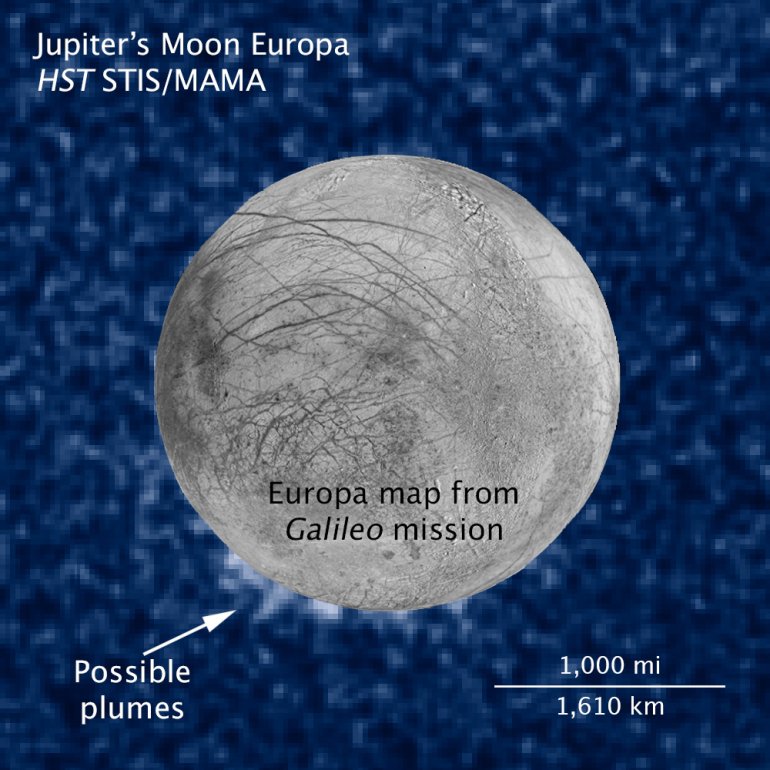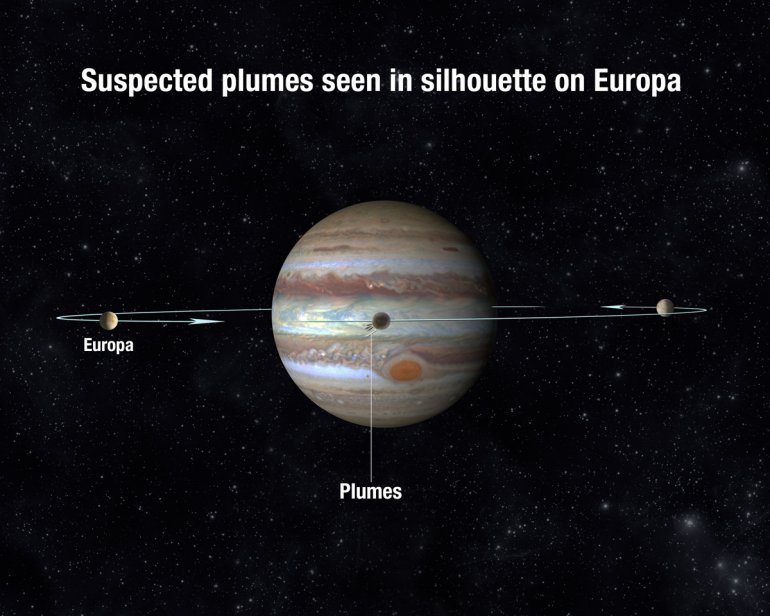NEW ORLEANS (WGNO) – Scientists analyzing ultra-violet data from the Hubble Space Telescope have imaged what they believe may be water vapor plumes erupting from the surface of Jupiter’s moon, Europa.

The plumes are visible at the 7 o’clock position in the image above. While the plumes erupting from the surface would most likely be in a gas form, it bolsters the theory that liquid water may be underneath the frozen moon’s surface. More importantly, the observation increases the possibility that missions to Europa may be able to sample Europa’s ocean without having to drill through miles of ice.
“Europa’s ocean is considered to be one of the most promising places that could potentially harbor life in the solar system,” said Geoff Yoder, acting associate administrator for NASA’s Science Mission Directorate in Washington. “These plumes, if they do indeed exist, may provide another way to sample Europa’s subsurface.”
Erupting to an altitude of 125 miles (200 km), the plumes create an opportunity to sample the water of Europa without having to dig through miles of an icy, unknown surface or even land on the moon’s surface.
The observations were taken when Europa was making a transit across the surface of Jupiter. A transit is when a celestial body passes in front of another, in this case Europa in front of Jupiter, as seen from Earth. Transits offer unique opportunities for scientific observations because we can study the shadows in addition to the moon in this case. The shadows are not normally visible against the darkness of space.

Europa could become the second moon in the solar system to have water vapor plumes if Hubble’s data is confirmed. In 2005, NASA’s Cassini orbiter detected jets of water vapor and dust spewing off the surface of Saturn’s moon Enceladus.
“Hubble’s unique capabilities enabled it to capture these plumes, once again demonstrating Hubble’s ability to make observations it was never designed to make,” said Paul Hertz, director of the Astrophysics Division at NASA Headquarters in Washington. “This observation opens up a world of possibilities, and we look forward to future missions — such as the James Webb Space Telescope — to follow up on this exciting discovery.”



